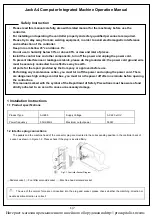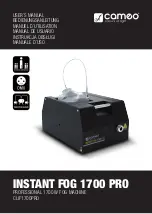
24
Use the standard needles. The size of your needle should
match the size of the thread and both should match the fabric.
For normal sewing, the same size and type of thread
should be used in the bobbin as on the upper part of the
machine.
Never use a bent or dull needle.
For successful sewing of stretch fabrics use stretch stitch
needles.
NEEDLE, THREAD AND FABRIC CHART
70
or
80
Cotton 60 - 100
Synthetic
Machine embroidery
Cotton
Synthetic
Silk A
Machine embroidery
Medium weight cottons,
medium weight synthetics,
poplin, seersucker,
gingham, velvet, light
weight woolens, linen.
Cotton 60 - 80
Mercerized 50 - 60
Synthetic
Cotton 30 - 60
Mercerized heavy
duty
Stretch
stitch
needle
80
or
90
100
All stretch fabrics.
Sheer cottons, silk
synthetics, fine laces,
batiste, dimity.
Heavy weight cottons,
medium to heavy
weight woollens, denim.
Changing the needle
1. Raise the needle bar to its highest position by turning
the hand wheel toward you.
2. Loosen the needle clamp screw by turning it toward
you.
3. Remove the needle by pulling it downward.
4. Insert the new needle into the needle clamp with the
flat side away from you.
5. Push the needle up as far as it can go.
6. Tighten the needle clamp screw firmly with the screw
driver.
Thread Size Needle Size Fabric
Always disconnect the machine from power
supply by removing the plug from the
socket-outlet.
CAUTION
Checking needle
With a good needle, a uniform clearance will be provided
between needle shank and flat plane of board over length.
Do not use a needle that has a bent or blunt point.
Flat board
Tablero plano
Flat part of needle
Parte plana de la aguja
Shank
Espiga
Pin
Pasador
Flat
side
away
from
you.
Flat side
Lado plano
Needle
Aguja
Lado
plano
hacia
fuera
de Vd.
Clamp screw
Tornillo
Summary of Contents for HZL-35Z
Page 1: ...INSTRUCTION MANUAL MANUAL DE INSTRUCCION ...
Page 4: ...2 ...
















































